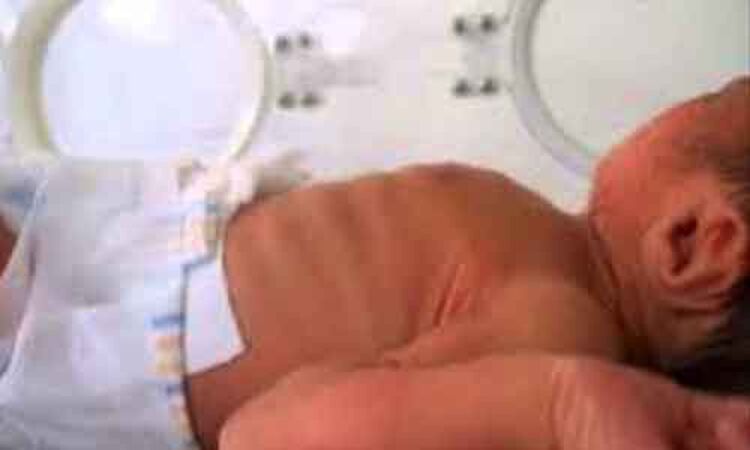- Home
- Medical news & Guidelines
- Anesthesiology
- Cardiology and CTVS
- Critical Care
- Dentistry
- Dermatology
- Diabetes and Endocrinology
- ENT
- Gastroenterology
- Medicine
- Nephrology
- Neurology
- Obstretics-Gynaecology
- Oncology
- Ophthalmology
- Orthopaedics
- Pediatrics-Neonatology
- Psychiatry
- Pulmonology
- Radiology
- Surgery
- Urology
- Laboratory Medicine
- Diet
- Nursing
- Paramedical
- Physiotherapy
- Health news
- Fact Check
- Bone Health Fact Check
- Brain Health Fact Check
- Cancer Related Fact Check
- Child Care Fact Check
- Dental and oral health fact check
- Diabetes and metabolic health fact check
- Diet and Nutrition Fact Check
- Eye and ENT Care Fact Check
- Fitness fact check
- Gut health fact check
- Heart health fact check
- Kidney health fact check
- Medical education fact check
- Men's health fact check
- Respiratory fact check
- Skin and hair care fact check
- Vaccine and Immunization fact check
- Women's health fact check
- AYUSH
- State News
- Andaman and Nicobar Islands
- Andhra Pradesh
- Arunachal Pradesh
- Assam
- Bihar
- Chandigarh
- Chattisgarh
- Dadra and Nagar Haveli
- Daman and Diu
- Delhi
- Goa
- Gujarat
- Haryana
- Himachal Pradesh
- Jammu & Kashmir
- Jharkhand
- Karnataka
- Kerala
- Ladakh
- Lakshadweep
- Madhya Pradesh
- Maharashtra
- Manipur
- Meghalaya
- Mizoram
- Nagaland
- Odisha
- Puducherry
- Punjab
- Rajasthan
- Sikkim
- Tamil Nadu
- Telangana
- Tripura
- Uttar Pradesh
- Uttrakhand
- West Bengal
- Medical Education
- Industry
Long-term management of pediatric bronchopulmonary dysplasia: ERS Guideline

The European Respiratory Society (ERS) has released guidelines for the long-term management of pediatric bronchopulmonary dysplasia (BPD). This guideline provides recommendations on monitoring and treatment of children with established BPD older than 36 weeks postmenstrual age or after discharge from the hospital, based on predefined PICO (Population, Intervention, Comparison and Outcomes) questions relevant for clinical care.
Bronchopulmonary dysplasia also called chronic lung disease of prematurity, this chronic respiratory disease largely affects children born very preterm. Advanced perinatal care has improved the survival of children born extremely preterm; however, the incidence of BPD has not decreased.
Key recommendations of the guideline include:
- Lung imaging is recommended to monitor children with BPD in subgroups only, for example, children with severe BPD, severe respiratory symptoms and/or recurrent hospital admissions due to respiratory morbidity.
- Lung function should be to monitor children with BPD.
- Individual advice should be given to parents regarding daycare attendance for children with BPD.
- Treatment with bronchodilators is recommended for children with BPD in subgroups only, for example, children with severe BPD, those with asthma-like symptoms, recurrent hospital admission due to respiratory morbidity, exercise intolerance or reversibility in lung function.
- Treatment with inhaled or systemic corticosteroids is not recommended for children with BPD. If the treating physician considers the use of inhaled/systemic corticosteroids of additional value, for example, children with severe BPD, severe respiratory symptoms, recurrent hospitalizations or equivalent, and not controlled with regular use of bronchodilators, the effects of treatment with inhaled/systemic corticosteroids should be carefully monitored during a trial period before being applied chronically.
- For those children with BPD who already received treatment with diuretics from the neonatal phase or neonatal intensive care unit onwards, the task force suggests natural weaning by the relative decrease in dose with increasing weight gain). If the treating physician considers the use of diuretics of additional value, for example when clinical signs of fluid retention are present, the effects of treatment with diuretics should be carefully monitored during a trial period before chronically applied.
Children with BPD should be provided supplemental oxygen with a minimum saturation target level of 90% should be maintained until further studies are performed.
"These recommendations should be considered until new and urgently needed evidence becomes available," wrote the authors.
"European Respiratory Society guideline on long-term management of children with bronchopulmonary dysplasia," is published in the European Respiratory Journal.
For more details click on the link: DOI: 10.1183/13993003.00788-2019
Dr Kamal Kant Kohli-MBBS, DTCD- a chest specialist with more than 30 years of practice and a flair for writing clinical articles, Dr Kamal Kant Kohli joined Medical Dialogues as a Chief Editor of Medical News. Besides writing articles, as an editor, he proofreads and verifies all the medical content published on Medical Dialogues including those coming from journals, studies,medical conferences,guidelines etc. Email: drkohli@medicaldialogues.in. Contact no. 011-43720751


